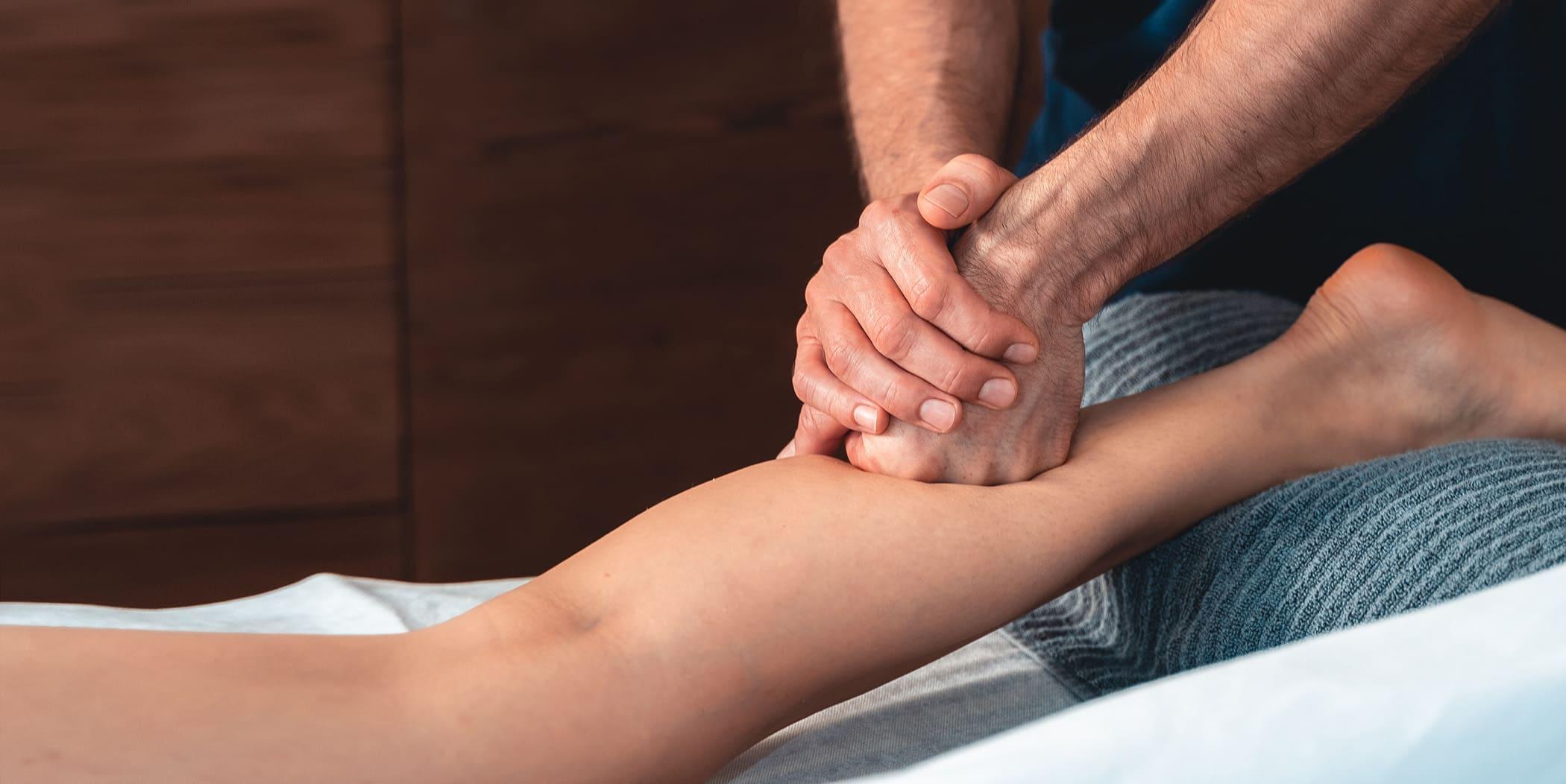Myofascial release Zürich
The importance of fasciae is newly recognized in science. They are no longer regarded as pure “packaging material“ for bones, muscles and internal organs.
Rather, they constitute a vital “voltage network“ which gives the body its shape and ensures that everything remains in place. All parts of the body are connected by the fasciae. Fascia therapy helps to go through life upright and healthy.
AVAILABLE THERAPISTS
We couldn't find any therapist for your query
PRICES FASCIA THERAPY ZURICH
45 Minuten: 115 CHF
60 Minuten: 144 CHF
75 Minuten: 172 CHF
90 Minuten: 205 CHF
120 Minuten: 270 CHF
Costs covered by health insurance 50%-90%.
No prescription from a doctor is necessary.
Most supplementary insurances cover the costs of a massage. Go to our health insurance page, select your supplementary insurance and see what therapists are recognised with your insurance.
What are fasciae and what do they do?
What is fascial treatment?
- Long even and deep touches through tissue.
- Dissolving of bonding of different tissue layers and stimulation of production of different liquids.
- It can be very painful, the pressure limit is just before the moment when the patient cramps up
To treat the fascia a special form of massage is necessary. It has a loosening and separating effect on the connective tissue by slowly and evenly pulling with relatively high pressure. The fascial massage can be performed by specially trained therapists. There is also a form of self-treatment using fascial rolls. (See the instruction video on this page)
Mostly pain occurs during the massage, which is described with the so called “well-being“ and indicates where there is an adhesion.
After problems and body regions the treatment can also be very painful, whereby care should be taken not to exceed the individual maximum pain threshold of each individual patient. This is reached at the latest when the client starts to cramp because he can no longer bear the pain.
When is fascia treatment used?
- All chronic pain in the musculoskeletal system
- Postoperative pain due to scar tissue sticking together
- pains caused by bad posture
- Aches due to intensive athletic training
It is mainly used in sports or therapy and is used to relieve various muscle and joint complaints. It also treats functional disorders of the organs and can be used preventively for general muscle relaxation.
The treatment of fasciae is effective in acute, chronic or psychosomatic pain, as well as in tensions caused by incorrect strain, mainly caused by prolonged sitting and monotonous movement patterns. In addition, it shows its beneficial, rehabilitative effect in pain-induced relieving postures.
What is the difference to other massages?
As the name suggests, fascial massage is aimed at fasciae, the main aim being to remove adhesions. With the classical massage, as with many other forms of massage, the focus is on the muscles and their parts. This relatively young method is becoming more and more popular and appreciated.
The treatment of fascia is characterized above all by its local applications, re-aligning pathological changes in connective tissue and stimulating the production of fluid, thus loosening adhesions. Slow, deep strokes are made with fingers, palms, elbows or aids. As a result, the fabric becomes supple again and the lubricity of the different layers of fabric is restored or improved.
Which methods of fascia treatment are available?
- Rolfing: This treatment method was developed in the 1950s by Dr. Ida Rolf. It combines vigorous and deep treatment of the affected connective tissue with careful guidance. As a result, the fasciae are mobilized and vitalized, which leads to the dissolution of adhesions, joint stabilization and improvement of movement patterns.
- Myofascial Release: This treatment is based on the physiotherapist John F. Barnes, who called it osteopathic therapy in the 1960s. The focus is on local changes in connective tissue that are achieved by direct stimulation. The manual stretching of the tissue or also pressure massages deep in the tissue are used.
- Fascial distortion model: This anatomical model was presented in the 1990s by emergency physician and osteopath Stephen Typaldos. It names six specific distortions of the fascia that can be treated individually.
The model is based on three ulcers: It then connects osteopathy and orthopathy with each other.
How does a fascia massage work?
At the beginning of the treatment there is a detailed conversation with the patient. It aims to clarify all symptoms and diagnose the tension in the body. After the interview, the specific posture and movement patterns in the standing position as well as in walking are examined.
The fasciae are massaged on the treatment couch in the supine, prone or lateral position. Depending on the complexity and nature of the complaint, the treatment can also be carried out while sitting or standing. During the therapy period, patients should wear only underwear so that the body and its reactions can be observed well. Each treatment ends with a final discussion in which the perceptions and impressions of the patient and the masseur are summarized again.
OUR OFFERS
MOST BOOKED MASSAGE
Classical massage
For normal tension without severe pain, book the Classic Massage.
Medical Massage
When you suffer from acute or chronic pain book a medical massage.
Sports massage
A massage with strong pressure. It can be used for the prevention and regeneration of the body before and after workouts.
Pregnancy massage
From the first month you can come to us for massage. The treatment is adjusted to the month of pregnancy.
Myofascial release
The aim is to detach different tissue layers from each other in order to eliminate discomfort.
Trigger point therapy
Pain points in the muscle are treated, which are often perceived as punctual hardenings and trigger pain.
Deep Tissue Massage
This involves working with a lot of pressure in depth and loosening fascia and muscles.
Lymphatic Drainage
In the case of swellings that occur, among other things, after operations or weakness of the veins, pregnancy, etc., the water in the tissues is eliminated more quickly here by lymphatic drainage.
Foot reflexology massage
The entire body can be influenced and brought back into balance via the foot reflex zones.
THERAPEUTICAL MASSAGE
Dorn Therapy
Acupuncture massage
A holistic and natural pain therapy concept from Switzerland
Relaxation Massage
The therapist combines different techniques (manual & energetic) and works on all levels (body, mind, soul).
Tuina
A holistic manual therapy method from Traditional Chinese Medicine. The therapist works along energy pathways and acupuncture points.
RELAXATION MASSAGE
Relaxation Massage
You want to relax deeply and let go? Then the relaxing massage is your optimal choice.
Couples Massage
Let the two of you pamper yourselves in the same room. An ideal gift to your loved ones for a birthday, Mother's Day, birth or just to give a little relaxation.
Lomi lomi massage
A traditional Hawaiian method, known for its flowing rhythmic massage techniques, mobilizations and stretches throughout the musculoskeletal system.
Shiatsu
Shiatsu works with energy pathways, the so-called meridians. The goal is to bring the energy back to its original and perfect flow

